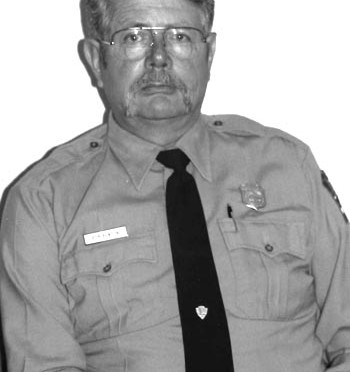March 11, 1994
How were CRLA and Oregon Caves associated between 1980 and 1985? Did they share staff after the group office closed?
No. As far as I can figure out, there were a lot of funny little things that happened with Oregon Caves. when they were part of the group office, I think that, by and large, the group office really did kind of take care of Oregon Caves pretty well. I don’t think they left them out to dry moneywise. I think they did okay. In retrospect, looking back at it from my perspective, they did not pay enough attention to it on site. In other words, people really did not watch what was happening over there to the degree they should have.
Was there much assistance from Crater Lake?
None at all. We had nothing to do with it. The problem, from a regional perspective at least, according to Briggle and Sarff, there were some really awful, awful problems at the caves (17). Of a magnitude, according to Sarff, that there was absolutely no choice but something radical had to happen over there. There were three obvious options. One was to continue as it was with probably a new person at the helm. Two [was] to put it under the auspices of the U.S. Forest Service and let them run it. Aztec Ruins is a national monument, which is a park area, I think it’s Aztec, is a precedent to that. There is another Park Service that’s run by the Forest Service.
Was that seriously considered?
I don’t know. From my perspective, and I was kind sick of that whole mess, it wasn’t a very good option. But Sarff, on the other hand, is an old Forest Service guy and he spent a lot of years with them. And I think he felt it was a viable option. And the third one was to leave it up to Crater Lake. I had been a part of, actually, a number of those kind of areas. We had little interlock with New York City at Fire Island in the last month I was there. We ran detached areas out at North Dakota when I was there. We had Fort Union Trading Post. Not only that, but we had Theodore Roosevelt, which was divided into three areas. So they in some ways became almost like satellites. And Colorado Monument was part of a cluster. So I had probably an unusual amount of experience, of the goods and bads, of those type of link ups. So I was up to my ears when the decision was finally made that we would run it. The agreement, which I hope to heaven is kept waved in front of Ackerman and the superintendent all the time so that they really realize that that’s the way it has to work, was very carefully crafted (18). As an example, George Buckingham has absolutely no control over the ranger functions at Oregon Caves. Nor does Kent, nor does anybody else (19). It’s strictly an advisory-type thing. That’s one of the dangers of the clusters is that the larger area retains dominance in every field more than an advisory capacity. That’s probably the niftiest document that was ever written, in my opinion, to make those kind of areas work. And I think it says it well when the fact that it’s been borrowed by 10 or 12 other areas with similar things. They are using the same agreement now.


